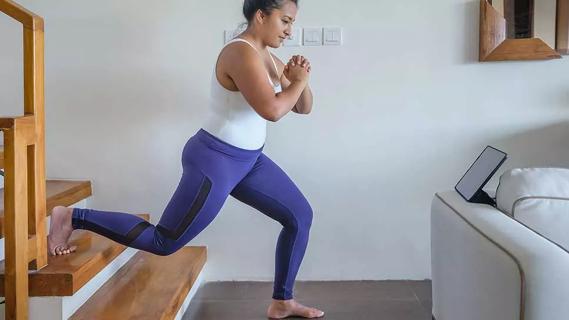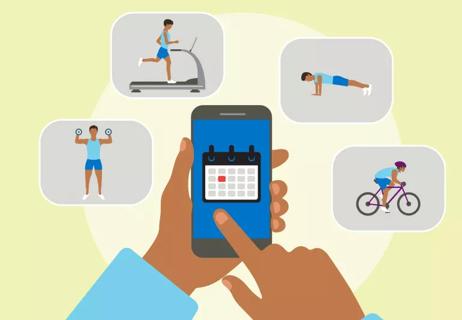Jump into the swing of things to improve your coordination, burn calories and get your heart rate going

There’s a good chance that you spent some time jumping rope as a child, whether it was in your backyard with siblings or on the school playground with friends.
Advertisement
Cleveland Clinic is a non-profit academic medical center. Advertising on our site helps support our mission. We do not endorse non-Cleveland Clinic products or services. Policy
And it was probably such a fun activity that you didn’t even clock it as a good way to get in some exercise. But now as an adult who’s focused on a healthy lifestyle, you may want to bring back the old-school hobby to help meet your fitness and wellness goals.
But does jumping rope really pay off? And is it good cardio?
Benefits of jump rope can help improve your coordination, get your heart rate going and help burn calories — and it’s an easy, affordable way to get some cardio in.
So, let’s skip ahead to the good stuff. Exercise physiologist Katie Lawton, MEd, explains the benefits of jumping rope and how to get started.
The basic concept of jumping rope? You swing a rope over your head and jump as it goes under your feet, repeating this process for as long as you can (or would like to). The goal is to establish a consistent rhythm.
And there’s a lot of variations on how to do it.
You can jump with the rope coming in front of you or you can try to jump backwards — but note that it’s tougher to see the rope this way. You can jump fast or try to do a double-under, where you swing the rope around twice before you land. You can even try jumping on one leg.
“Jumping rope is great cardiovascular exercise,” says Lawton. “It can get your heart rate up. You can use it to complement a strength training program.”
Advertisement
And if you’re an advanced jumper, you may opt for a weighted jump rope. Essentially, these types of rope are heavier than your standard jump rope — options range from a quarter pound up to one pound. You can also try a speed rope, which will help increase revolutions per minute (RPMs).
Ready to grab a rope and start hopping? Here’s how jumping rope may benefit you.
Jumping rope can be a good form of cardio, which increases your heart rate and can help decrease your risk of cardiovascular disease.
“Depending on how fast you jump rope, it’s going to engage more of that anaerobic cardiovascular exercise for you because you’re using your hands and your feet to jump rope,” explains Lawton. “That means it’s a short, fast form of high-intensity exercise where our body uses fuel stored in the muscles for energy, unlike aerobic exercises.”
And when you increase your heart rate, you also burn more calories.
So, how many calories does jumping rope burn? While it depends on your pace, on average, someone may burn about 100 calories jumping rope for 10 minutes.
Can you jump rope to lose weight?
“As part of a well-rounded exercise program and a healthy diet, jumping rope can help with weight loss,” says Lawton.
Research shows that jumping rope regularly can improve your balance and coordination.
“Jumping rope is all about timing — you have to be able to time the jump rope as it’s moving around you and when you’re going to jump, so there has to be a little bit of coordination between your hands and your feet to be able to tell your brain when you’re going to jump,” says Lawton.
And as we age, we tend to lose our sense of coordination and balance.
“So it’s also really good at making sure that we’re slowing the aging process as best as we can,” she adds.
Your bone density decreases as you age. But jumping rope may help keep your bones strong, research shows.
As jumping rope is a load-bearing activity, the small impact or stress from landing after a jump helps strengthen your bones.
All you need is a rope and yourself. And you can jump rope almost anywhere, making it a great option for on-the-go or when you’re traveling.
“Some people like to work out at home. Or if it’s raining outside and you don’t have a treadmill or elliptical, but still want some form of cardio, being able to pick up a rope is a great option,” says Lawton.
Did we mention it’s fun? And that it may help improve your mental health?
Advertisement
“With cardiovascular exercise in general, there’s an increase in serotonin, which can help with depression,” shares Lawton. “And if you get anxious sometimes, being active can also help calm ourselves down.”
So, how often should you get into the swing of things?
“You can jump rope anywhere between two or three days a week,” suggests Lawton.
And she says jumping rope can be part of your plan to get the recommended 150 minutes of moderate-intensity or 75 minutes of vigorous-intensity aerobic physical activity.
How long you end up jumping rope for each session is up to you. You may only be able to do 30 seconds at a time — and that’s OK, you can build up to longer periods.
And there’s a variety of jump rope programs out there, to help you determine how long to jump and how long to rest. One example: Jump for 60 seconds, rest for 30 seconds. Repeat this sequence 10 times.
Regardless of how long you jump, it’s vital that you do it correctly, says Lawton.
“Jumping rope is equal to running when we’re talking about the force and impact involved,” she explains.
You want to make sure your jump rope is the right length for you: If you stand in the center of the rope, each end should reach your armpit. When it comes to jumping, slightly bend your knees and keep your arm close to your body.
Advertisement
“Try to keep your shoulders and neck relaxed — avoid shrugging your shoulders. The movement should primarily be in your wrists,” instructs Lawton. “When making contact with the ground, make sure you’re landing quietly.”
She adds that it may be beneficial to do some calf strengthening and stretching exercises if you plan on making jump rope a part of your fitness routine.
“Doing so will help you jump better and for longer,” she says.
And while jumping rope may seem like a simple task, Lawton notes that like most forms of exercise, you can injure yourself. It’s important that you gradually increase intensity and duration of jumping rope. Before jumping rope for the first time, try forward and backward line hops for a few minutes beforehand.
“If you’re jumping rope excessively — every day or for extended periods of time — it can cause potential foot and ankle problems, and even some knee problems,” she warns.
She also says it’s best to wear sneakers while jumping rope.
Want to give jump rope a try? Lawton says jumping rope is mostly safe and easy to do.
People who have joint conditions like arthritis or certain orthopaedic issues may want to avoid jumping rope. And if you have a heart condition, it’s best to talk to your healthcare provider first.
Advertisement
Overall, jumping rope can be a fun way to jump-start your fitness goals or a way to switch up your workouts.
“Jumping rope requires a large demand of energy which can burn a significant number of calories,” says Lawton. “If done correctly, mixing in the jump rope into a routine is healthy and fun.”
Learn more about our editorial process.
Advertisement

The exercise — which you’ve probably been doing since grade school — can be intimidating, but proper form can help

Exercise lowers risk for heart conditions, improves mental health and reduces visceral fat that can compromise your organs

Ask questions, get referrals and consider if someone is a good fit for you and your fitness goals

Expect a few bumps in the road, work out for the right reasons and give yourself some credit

Walking with a weighted backpack is a low-impact, full-body workout that’s growing in popularity

A super high heart rate means you’re burning more than fat

Meet your workout goals by accounting for frequency, intensity, time and type

This modified challenge offers a head start on healthier habits

Type 2 diabetes isn’t inevitable with these dietary changes

Applying a hot or cold compress can help with pain